Currently, on the windowsills of city apartments and private houses, you can increasingly see plants that were usually grown in the garden. Not an exception and indoor gerbera, home care which should be comprehensive. This will allow to achieve long magnificent flowering, pleasing the owner’s eyes with its spring colors.
Material Content:
Types and varieties of indoor gerberas
Gerbera, cultivated in greenhouses, front gardens and flower pots, is a herbaceous perennial plant from the Asters family with a variety of colors, except for blue. In the wild, more than 80 species are found that are found in South Africa, tropical Asia and Madagascar. Externally, the flower is very similar to chamomile, for which in literature, especially in English, its second name is used - transvaal chamomile.
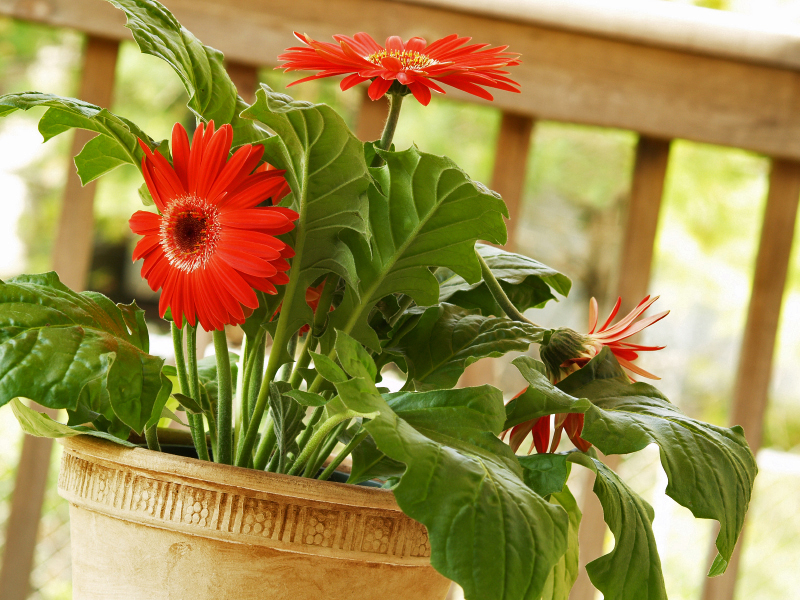
In floriculture, compact forms and varieties of Jameson's gerbera are grown, not exceeding 25 cm in height. For landscaping apartments and offices, such varieties as Happipot, Ilios, Hummingbird, Parade and Duroramix are most often used. The last variety with semi-double inflorescences is characterized by a longer phase of life in comparison with other forms.
How to care for indoor gerberas?
Caring for a gerbera in a pot is not particularly difficult. However, when buying a flower or receiving a gift, the owner should know that the plant, the master of which he becomes, needs proper care, which allows the tropical plant to fully develop and bloom.
More materials:gerbera indoor
Lighting and temperature
The flower needs a lot of light, well tolerating the direct sunlight of the morning and evening sun. In the summer, you should put the gerbera in the fresh air or organize a systematic ventilation of the room where it is located.In the winter season, artificial additional lighting should be provided, which will increase the duration of daylight hours and extend the flowering period.
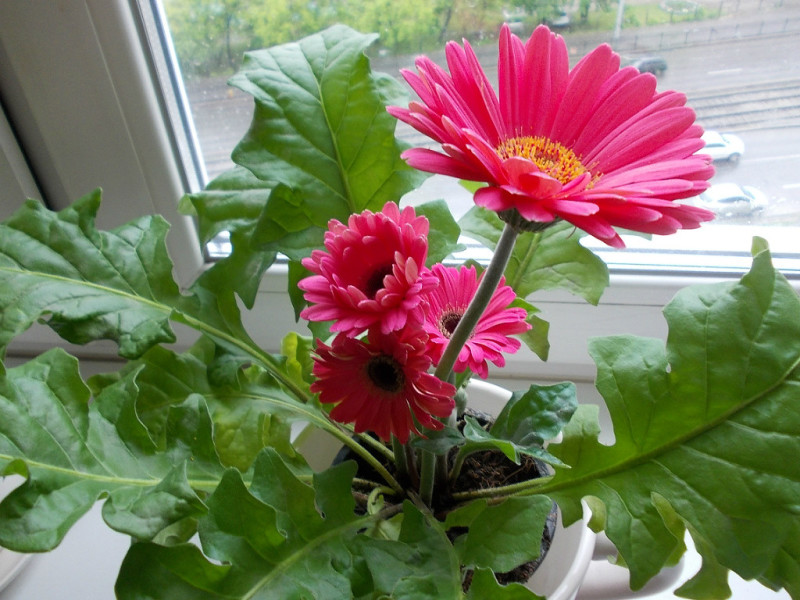
The temperature regime is provided depending on the season:
- in summer - 20-24 ° C;
- in winter - 16-20 ° C.
Important! Lowering the temperature to 12 ° C leads to the immersion of the flower in a state of rest, in which all processes slow down, flowering becomes impossible until awakening.
Watering
Tropical flower requires constant watering. Humidification should be carried out with standing water not cooler than 20 ° C. Watering with cold water poses a great danger: a plant can become sick and even die.
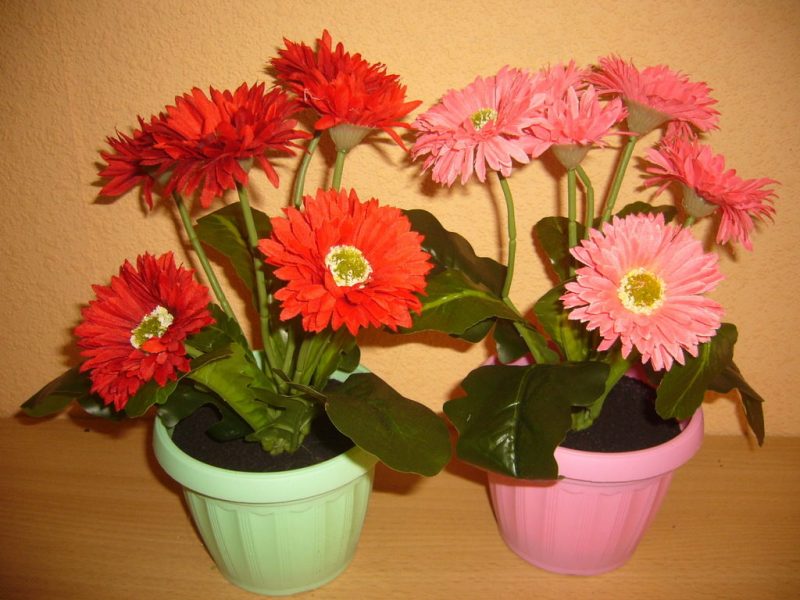
The procedure can be carried out in two ways:
- The plant is watered along the edge of the pot to prevent water from entering the outlet.
- Humidification using a pallet involves placing the pot in a container of water for half an hour.
Attention! Overmoistening of the soil should not be allowed: excess moisture can cause the development of rot on root sockets and dangerous pests - nematodes.
Air humidity
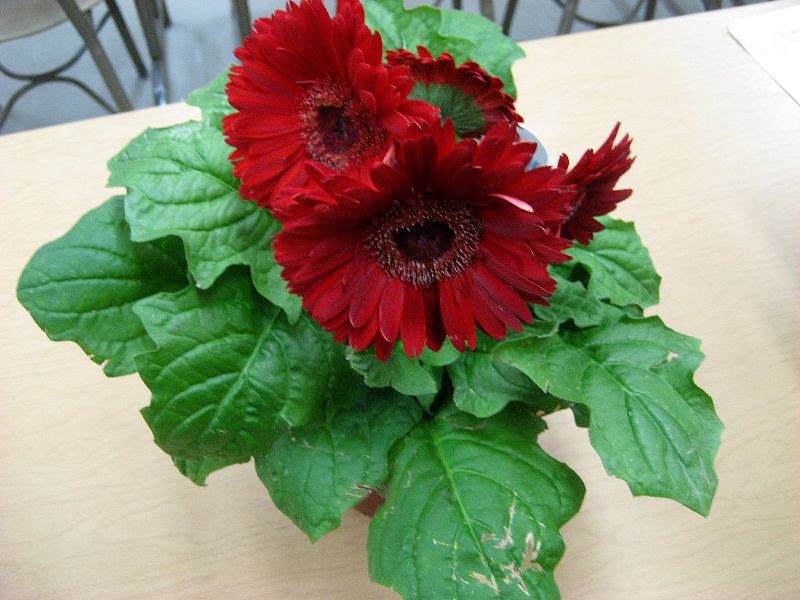
The exotic representative does not like dry air and will be very grateful for the systematic spraying. However, the plant should be sprayed from a fine spray that creates a water mist so that water drops do not fall on the flowers.
Fertilizer application
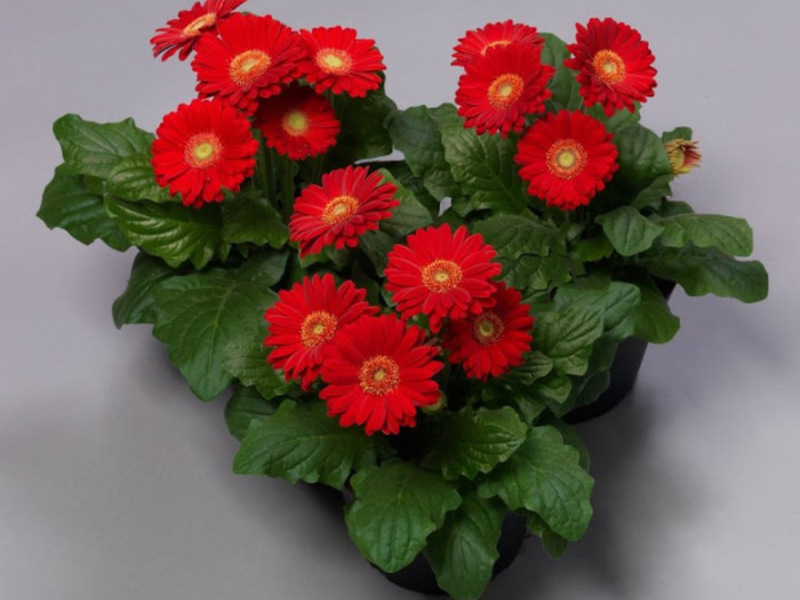
Indoor gerberas need additional nutrition and enrichment of the substrate with various macrocells, depending on the phase of development:
- In the phase of growing green mass, observed from February to April and in the summer months, the plant is fed with nitrogen-containing mineral fertilizers.
- In the flowering phase of the gerbera, top dressing with a high potassium content is required, which ensures the splendor of the flower.
Important! When preparing a nutrient solution, it is necessary to reduce the concentration of mineral fertilizers by half from that indicated on the package. And also the use of organic matter is not allowed due to its intolerance to tropical plants.
Transplant and soil requirements
The transplant is carried out annually after flowering is completed, when the plant plunges into a "sleeping" state.
At that time:
- A pot is prepared 2-3 cm larger than the previous one.
- Expanded clay or gravel drainage is placed at the bottom.
- The tank is filled with special soil for growing gerberas.
- The flower carefully, so as not to damage the delicate root system, together with the earthen lump is removed from the old pot and placed in a new one.
- The root neck should be 2-3 cm above the surface of the substrate.
Gerberas prefer slightly acidic soils. The substrate for an indoor culture representative is purchased at specialized flower shops or prepared independently from sheet soil, peat and sand in a ratio of 2: 1: 1.
Diseases and Pests
Culture refers to plants that are resistant to diseases and pests. However, violation of the irrigation regime can lead to the development of rot, powdery mildew and viral diseases. With prolonged stagnation of moisture, not only in the soil, but also in the flower outlet, there are also manifestations of late blight and fusariosis. In this case, to protect the gerbera will help the correction of care measures, as well as timely treatment with a fungicide solution. But, despite the negative consequences of waterlogging, low air humidity and soil moisture deficiency can cause wilting and death of the plant.

The plant suffers from greenhouse whiteflies, thrips. In dry air, the appearance of a spider mite is also noted, which can be eliminated only by spraying with the Aktellik insecticide or other analogs according to the manufacturer's instructions.
Reproduction of room gerbera at home
Home gerbera breeds in two ways: vegetative and generative.
Vegetative Method
The main method of propagating gerbera is dividing the bush: when grafting, varietal qualities may not be preserved.Upon reaching the age of three to four years, the flower already forms several new bushes and can be planted. When separating the bushes, it is necessary to control that each instance contains at least three growth points. The rooting of a new plant lasts about six months, and flowering occurs ten months after transplanting.
Seed method
The method consists of the following steps:
- Seeds are sown on seedlings.
- For the first time, seedlings dive when one pair of true leaves forms on the seedlings.
- After the formation of the second pair of leaves, a second picking of plants is carried out in separate pots.
The generative method is rarely used due to the complexity and low productivity.
The main problems when growing
Growing gerberas at home does not always go smoothly. Often, beginning flower growers encounter certain difficulties associated with ignorance of the nuances of care.
Why do leaves turn yellow?

Among the reasons that can lead to yellowing of the leaves are:
- excessive watering, leading to stagnation of water and provoking the development of rot;
- ingress of water during irrigation into the outlet of the plant;
- excessive soil and air dryness;
- non-compliance with spraying rules;
- watering with cold water.
By ensuring appropriate conditions of detention, problems can be avoided. If they have already arisen, then the adjustment of care measures will allow them to be resolved.
How to achieve magnificent flowering?
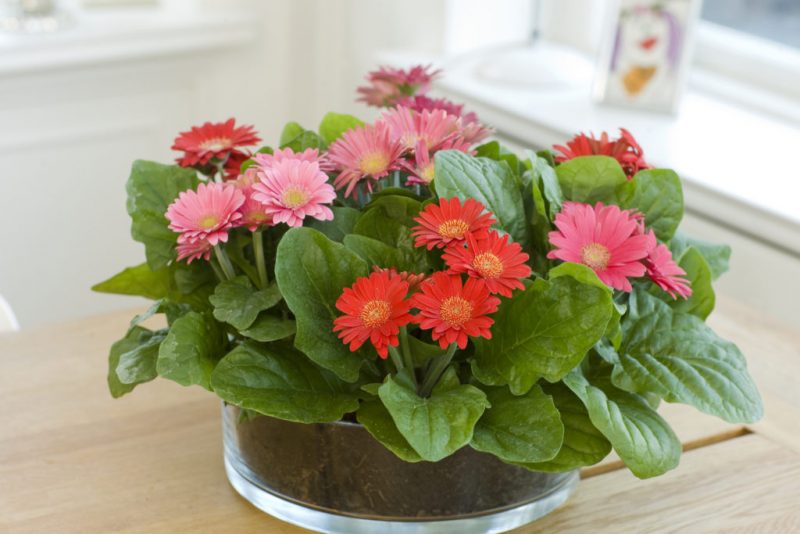
The abundance of flowering is directly dependent on compliance with agrotechnical requirements for growing gerbera at home:
- Lighting. In order for the gerbera to bloom, it needs a certain duration of daylight hours - 12 hours. It blooms most abundantly from August to November, when this condition is fulfilled naturally. Also, a flowering state can continue until June, subject to the creation of additional lighting. But from June to August, when the sun is at its highest point, the gerbera ceases to bloom and builds up green mass.
- Top dressing. Do not use too many nitrogen-containing plants. They should be replaced with mineral fertilizers, which include potassium and phosphorus - superphosphate, potassium nitrate.
- Transfer. When a plant is replanted, the size of the pot should be correctly selected: in a too large pot, the gerbera will not bloom, spending all the energy on building up the root system.
Thus, if you follow all the recommendations for caring for a room flower, a delicate and beautiful gerbera will reward its owner with long beautiful flowering.












